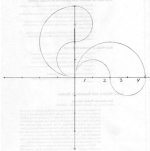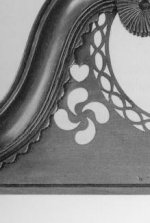Could anyone help me in finding a way to draw a fylfot? I have a customer who wants one on a table I am building for him. I have found a photo of one in an old "Antiques" magazine. I am wondering if there is a way toproperly lay these out. I cannot draw very well, but will try anything once.Thanks in advance, Bob
You are using an out of date browser. It may not display this or other websites correctly.
You should upgrade or use an alternative browser.
You should upgrade or use an alternative browser.
Need to know how to draw a fylfot
- Thread starter bobkloes
- Start date
John McAlister
Well-known member
Bob, I hate to show my ignorance but what is a fylfot?
John McAlister
John McAlister
Hello John. A fylfot is an old german design found on spice chests and I have seen one on a highboy. It is 4 lobed and fits inside a circle. I guess I was wondering if there is a way to draw one with a compass. I have been playing around with the layout, but just cannot seem to get it to look right. I did a "google" search , but all you get are swasticas. Those are not what it is.Thanks for asking . I can send you an email with a picture of one. I need to figure out how to post a picture here. That is my fault. Thanks again, Bob
Mark Arnold
Well-known member
Bob,
I think the layout was done with dividers using only two settings. First, lay out an axis of two perpendicular lines that are the desired length of your design. Divide each leg into 4 equal parts. Set the compass radius to one part and from points 1 and 3 swing two arcs to make an ogee. (see image below) Set the divider radius to two parts and swing an arc from point 2. It appears that the smaller and greater arcs merge before they reach the axis.
The photo below is from p. 409 of Connecticut Valley Furniture by Thomas P. Kugelman and Alice K. Kugelman with Robert Lionetti.
I think the layout was done with dividers using only two settings. First, lay out an axis of two perpendicular lines that are the desired length of your design. Divide each leg into 4 equal parts. Set the compass radius to one part and from points 1 and 3 swing two arcs to make an ogee. (see image below) Set the divider radius to two parts and swing an arc from point 2. It appears that the smaller and greater arcs merge before they reach the axis.
The photo below is from p. 409 of Connecticut Valley Furniture by Thomas P. Kugelman and Alice K. Kugelman with Robert Lionetti.
Attachments
Kent A. Ryan
Well-known member
Fylfot:
I like the style above where arcs meet short of the large axis intersection. The style when arcs intersect at the main axis (not like Mark's photo and drawing above - see below) otherwise known as a lauburu thought to be of Basque origin.
Kent
I like the style above where arcs meet short of the large axis intersection. The style when arcs intersect at the main axis (not like Mark's photo and drawing above - see below) otherwise known as a lauburu thought to be of Basque origin.
Kent
Attachments
john previti
Well-known member
You could also look in Lee Ellen Griffith's book the pa spice box # 38 it has one on the front door also. Good luck
John Previti
John Previti
Share:



![142px-Lauburu.svg[1].png](/community/data/attachments/0/47-e083f9e2f4cdba499414da4a89b774b8.jpg)